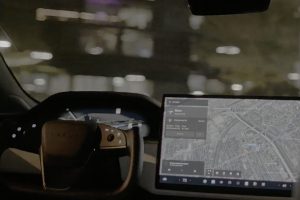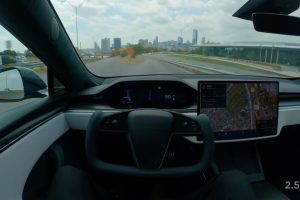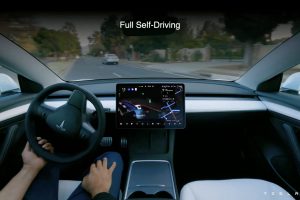It appears that Tesla’s internal beta of FSD Beta 10.13 was successful, as reports recently emerged that the highly-anticipated iteration of the advanced driver-assist system has started rolling out to consumer vehicles. A good portion of the update’s release notes has also been shared online.
As former Tesla AI Director Andrej Karpathy announced his departure from the company last week, CEO Elon Musk remarked that FSD Beta 10.13 should handle some tough left turns. Musk also remarked that the recent 10.x updates of FSD Beta are already “mostly at v11” in terms of their capabilities, though FSD Beta v11 itself should still be released hopefully next month.
Interestingly enough, one of the first observed vehicles that received FSD Beta 10.13 was a Model Y from Gigafactory Texas, a vehicle with a 4680 battery pack. This is quite an interesting development, as FSD Beta and 4680 battery packs are among Tesla’s most important projects in recent years.
Just as stated by Elon Musk, FSD Beta 10.13’s release notes directly reference beta tester Chuck Cook’s extremely challenging unprotected left turn, as well as other notable improvements on false positives and false slowdowns around crosswalks. While FSD Beta 10.13 would most definitely not be the final iteration of the advanced driver-assist system, it promises to be a substantial improvement overall.
Following are (partial) release notes of FSD Beta v10.13.
FSD Beta v10.13 Release Notes
- Improved decision making for unprotected left turns using better estimation of ego’s interaction with other objects through the maneuver.
- Improved stopping pose while yielding for crossing objects at “Chuck Cook style” unprotected left turns by utilizing the median safety regions.
- Made speed profile more comfortable when creeping for visibility, to allow for smoother stops when protecting for potentially occluded objects.
- Enabled creeping for visibility at any intersection where objects might cross ego’s path, regardless of presence of traffic controls.
- Improved lane position error by 5% and lane recall by 12%…
- Improved lane position error of crossing and merging lanes by 22% by adding long-range skip connections and a more powerful trunk to the network architecture.
- Improved pedestrian and bicyclist velocity error by 17%, especially when ego is making a turn, by improving the onboard trajectory estimation used as input to the neural network.
- Improved animal detection recall by 34% and decreased false positives by 8% by doubling the size of the auto-labeled training set.
- Improved detection recall of far away crossing vehicles by 4% by tuning the loss function used during training and improving label quality.
- Improved the “is parked” attribute for vehicles by 5% by adding 20% more examples to the training set.
- Upgraded the occupancy network to detect dynamic objects and improved performance by adding a video module, tuning the loss function, and adding 37k new clips to the training set.
- Reduced false slowdowns around crosswalks by better classification of pedestrians and bicyclists as not intending to interact with ego.
- Reduced false lane changes for cones or blockages by preferring gentle offsetting in-lane where appropriate.
- Improved in-lane positioning on wide residential roads.
- Improved object future path prediction in scenarios with high yaw rate.
- Improved speed limit sign accuracy on digital speed limits by 29%, on signs with difficult relevance by 23%, on 3-digit speeds by 39%, and on speed limit end signs by 62%. Neural network was trained with 84% more examples in the training set and with architectural changes which allocated more compute in the network head.





